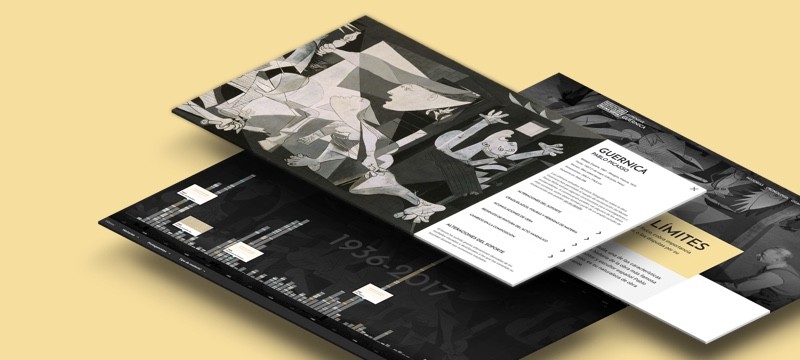In its political-symbolic dimension, the pain of Gernika transforms into a lament against violence, recalling at once people’s fragility and their ability to react and unite.
Since 1937, the painting has been able to express, visualise and connect different historical and political processes, rising up in the fight against the exploitation of human life and civil rights in states’ geopolitical strategies, in the condemnation of racist and patriarchal structures, and against economic interests above the common good which determine who can live and die.
From the use and appropriation of the painting as a political symbol and icon, Guernica is visible on different stages where its image has been taken up as a protest against injustice and for peace. With its quality as a historical painting making it a universal allegory, Guernica constantly moves with the times, thus enhancing its critical force.
Picasso, in avoiding any direct allusion to the bombing of Gernika in his painting, laid the foundations for an icon that could represent all forms of violence and all bombings, an icon that could join and unite histories without nullifying them.

Against violence
The realisation of the painting was originally in response to the fascist violence that ushered in a new form of war, yet it was around the Vietnam War, with the actions of the Art Workers’ Coalition at New York’s Museum of Modern Art, when it started to gain momentum as a political icon.
Since then, Guernica has appeared, totally or partially, in drawings, vignettes, posters and banners at demonstrations against international politics related to ongoing armed conflicts. Moreover, each element or figure depicted in the painting has taken on its own autonomy and transcends the whole as it continually surfaces and redefines itself, calling to mind the existence of the victims.






